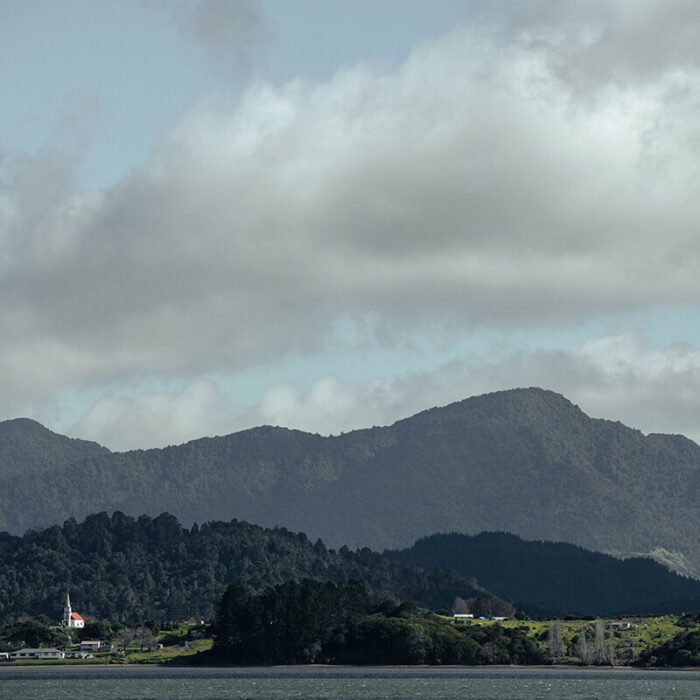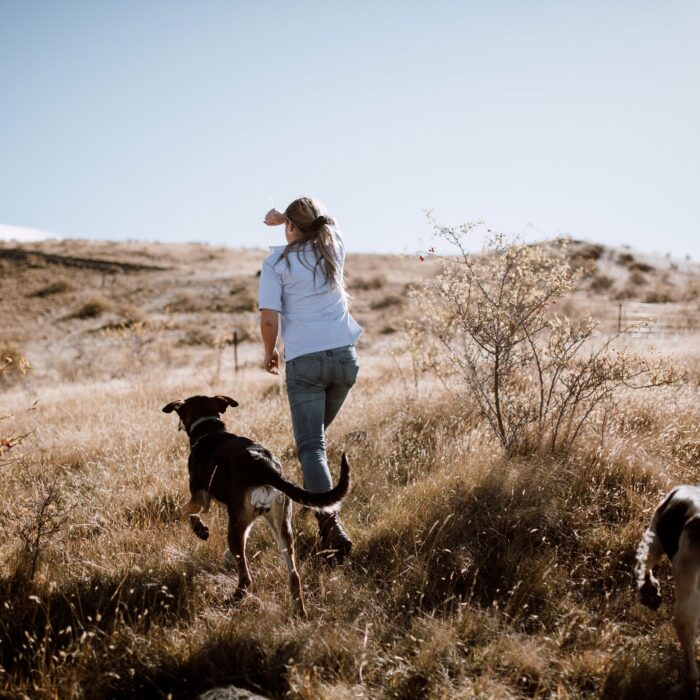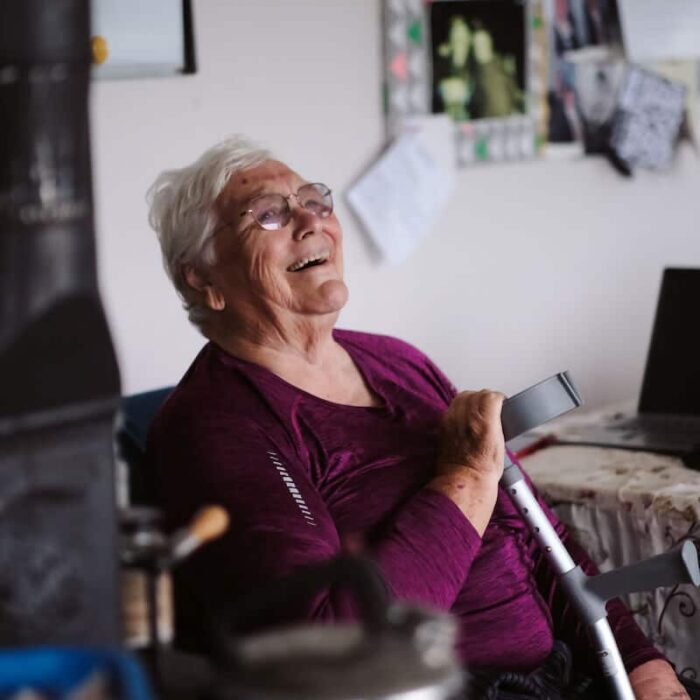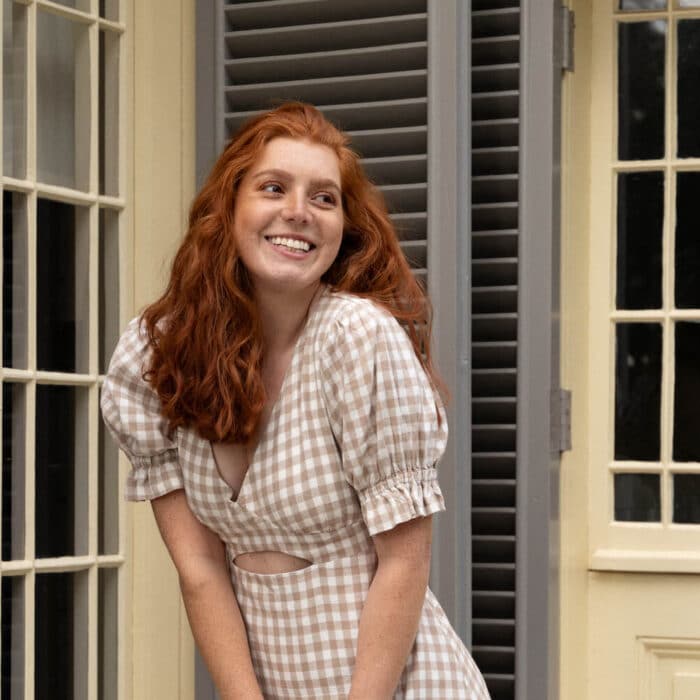18 April 2023
“I found myself through weaving”: how raranga has helped one woman discover her place in the world
Writer: Sionainn Mentor-King
Photographer: Michelle Marshall
Hineraukura Norris was twenty-three when she discovered te whare pora and the art of traditional Māori weaving, a discovery that has led her on a journey of self-realisation and reconnection that has spanned more than half her life.

Hineraukura (Ngāpuhi), whose tūpuna come from both Te Tai Tokerau and Waikato in Aotearoa, grew up in Australia, where she felt a sense of disconnection from her ancestry and heritage. Not knowing who her birth father was left her with a big question mark on one side of her family tree, a displacement in the world that was compounded by the fact that her Scottish step-father sent her to Highland dancing lessons, immersing her in yet another culture disparate from her own Māori tikanga. “Talk about identity crisis!” Hineraukua says with a laugh.
It’s something that she can joke about now at age fifty, but the journey to finding herself and her tūpuna connections – on both sides of her whānau – has been long, and hard. The childhood she describes is one of rootlessness and disconnection, of an internal void that left her not knowing who she was or where she belonged in the world, even after returning to Aotearoa at age ten, to her mother’s hometown of Whangārei.
When she was in her early twenties, a catalyst for change came in the form of a bitter tragedy – Hine lost her second-born child not long after giving birth. “Her organs just started shutting down. It was a big trauma for me,” Hine says. “Her name was Gypsy Rose, because she was just passing through. She created change.” The loss of her baby girl helped Hine to find her way out of the void within and set her on the path to self-discovery that has become the defining journey of her life.
The sense of not belonging, of dislocation or disconnection from the natural, spiritual and even the social world is an experience shared by many. It is not unique to indigenous and colonised cultures, but perhaps due to the more recent – and more abrupt – severance from tradition and culture, the feeling of disconnection can be more pronounced in peoples that have been forced to adopt Western culture in order to survive. For Hineraukura, the death of her daughter set her on the journey towards finding her calling as a ringatoi, working with traditional and contemporary art forms. This, in turn, has led her to discover her own heritage and her DNA connection to te taiao, mahi raranga, and te ao Māori as a whole.

“I started off making clay vessels – uku,” Hine says. “This is way back in the nineties. We had a very strong uku movement then, a really vibrant applied arts studio at North Tech [in Whangārei], so we could really play around. I started off in uku but moved into weaving really fast. I wanted to do binding around my vessels. That fascinated me – how we didn’t use nails, everything was lashed – and it was like, ‘Wow, that’s cool. I wanna do that.’ But as the flax dried out, it would loosen up and stop working. So I realised that I had to go find a weaver to teach me.”
The teacher she found was Mary Hill, a master weaver from Pawarenga. “She was hard-core,” Hine remembers with a grin. “She taught me a big kete in one day – the whole process. Then she said, ‘Right! Now go home and make five more, and if you come back, I’ll teach you.’ And I did. And by the fifth one, I was understanding what I was actually doing. So it wasn’t a bad strategy.”
Hine says she’s not that hard on her students when she teaches weaving, but understands why Mary was. “A lot of people want to give weaving a go, but once they realise all the steps that are involved and that it’s not as sedentary and gentle as it looks – it’s actually a lot of physical work – you find they drop off pretty fast. And that’s okay. There’s nothing wrong with that. But weaving, I think it is in my DNA. It is an ancestral thing that speaks to you. Once I started learning, it grabbed me.”


She describes weaving as a reflective practice. “Once we connect, it starts our healing journey. You’re working with cycles instead of a chronological clock – working with seasons and weather. I found myself through weaving – I don’t know how else to describe it. It was gradual, but it definitely is a healing avenue for our people. It grounded me, it connected me to the environment, to te taiao.”
Mahi raranga, or the arts of te whare pora – a metaphorical whare that umbrellas all the woven arts – were an integral part of pre-colonial life in Aotearoa. “Everything we created had a function,” Hine explains. “Weaving was used for everything, from storing kūmara to really intricate work of making korowai and clothing. It was a huge part of the foundation of our culture.” She describes how the art form originated in the Pacific and was brought to Aotearoa during the migrations. “In the Islands they used palms. You can see a whiri in some of the kete that we make – that is actually an adaptation of the palm. We plait the flax to make that spine that would normally be in a palm leaf.”
Hine believes it’s a myth that weaving was traditionally solely the domain of women. “I know a lot of men who weave. They’re such fast learners, and they do beautiful, beautiful work. So I can’t personally believe that it was just a women’s thing.” She believes patriarchy arrived with the colonial mindset. “They didn’t look at women as having chief status, so they wouldn’t deal with the women rangatira. And that just filtered out into every facet of our life. But it actually worked in our favour because they didn’t recognise us as being expert at anything. Just like in every other art form, we had tohunga – I heard someone say ‘witchdoctor’ the other day, and I hadn’t heard that for years, but basically that’s what came to be known as tohunga with the Tohunga Suppression Act [of 1907]. But women, you know, we just made those kits. We were actually able to hide a lot in our weaving. And even with the kauae – they could carry it and not be criminalised or vilified.” A secret transmission of knowledge, then, has been passed down by women through the patterns and designs they wove, and wore.
“There was form and function, and function could also be esoteric. Weaving taught me that,” Hine says. “And to do karakia, and to acknowledge. You’re always acknowledging in te ao Māori. It’s natural to acknowledge the tree that you’re sitting under, Papa beneath your feet, so you’re always connected instead of disconnected.”

Another connection Hine found through weaving was one of the keys to her identity and the missing link of her youth. When she was in her mid-twenties, she met her dad. “My weaving teacher went and looked at the electoral roll and found his name. Mary don’t muck around! She pushed the phone across the desk and said, “Right, you’re on.” And it was already ringing. So I met my dad, but it was actually really challenging. He’s a staunch Mormon, and I just wanted to know our marae, our whakapapa, all that sort of thing. We had a bit of a clash there. Importantly, though, I developed a relationship with my brothers and sisters.”
Most of her father’s family are in the Waikato, and Hine spent time there when her children were young, in order to give them the orientation and sense of belonging she herself lacked as a child. While she knows the whakapapa on her mother’s side, she’s still learning about her Waikato heritage. It is, however, inherently within her. “I was weaving for about three years before I met Dad. And then he showed me a photo of our great-grandmothers – they were known as the Maniapoto Weavers. That’s DNA stuff.”
While mahi raranga may have been the beginning of Hine’s journey, it hasn’t been her whole path. Though she honed her technique to the point where she could weave in the dark, an injury resulting in fibromyalgia forced her to stop. “I wasn’t in the arts scene for a long time cos I was hiding in pain. It took years to get a diagnosis and learn how to manage it. But once I did, I came back out, and I became a painter and a storyteller.”
Hine’s current mission is to tell the stories of the atua wāhine – the female deities of te ao Māori. “At the moment I’m in love with Hinepūtehue. She was a daughter of Tāne and Hinerauāmoa, and her gift to us was the hue. When they had that first big battle after the separation of the parents, she blew into it and calmed all our uncles down…for five minutes,” Hine says with a laugh.
By Matariki, Hine plans to have the story of Hinepūtehue illustrated and published, and to then embark on a year-long series of wānanga teaching people how to grow hue. “It’s a form of activism for me – going back to using hue for their original function, which started as a water bottle. There’s no reason why we couldn’t use them again. Our water bottles all end up in landfills, and how do they break down? We could use the hue instead.”
The time to return to such historical and ancestral practices seems to be at hand, not just for Hine but for people all over Aotearoa. “I’ve been noticing lately,” Hine says, “there’s DNA heritage waking up within people, on a spiritual level. I’m hearing a lot of people say, ‘How did I know that?’ And I’m like, ‘That’s your DNA waking up.’”
Hine herself has recently returned to her place of ancestral heritage on her maternal side. At the end of last year she moved to Rawene on the Hokianga Harbour, or Hokianga-nui-a-Kupe – meaning ‘the place of Kupe’s great return’. The great Polynesian navigator settled for a time in the Hokianga after his arrival from Hawaiki, and on departure back to his homeland, vowed to return to the spot. This story, too, is in Hine’s DNA. “I’m Ngāpuhi-Nui-Tonu, and this area for me is the centre of the universe. This is where we come from originally, and I just feel so at home here.”
The move – or return – has given her the strength and grounding she needs to embrace her newest incarnation as painter and storyteller. “You get to define who you are,” Hine says. “In the last ten years, I’ve nailed that. I get to define who I am and how I work in the world.”
Glossary. Atua wāhine, female deities. Hue, gourd. Karakia, ritual chants, incantation, chant, prayer. Kete, basket, kit. Korowai, traditional cloak. Mahi raranga, weaving, the work of weaving. Marae, traditional meeting house. Matariki, a cluster of stars, Pleiades, recognised as the Māori New Year. Papa[tūānuku], Earth, Earth Mother, wife of Ranginui. Rangatira, high ranking, noble, esteemed. Ringatoi, artist. Te ao Māori, the Māori worldview. Te taiao, the natural world. Te whare pora, the art of weaving. Tikanga, custom, habit, lore. Tohunga, to be expert, proficient, a master/expert. Tūpuna, ancestors, grandparents. Uku, clay. Wānanga, meeting, forum, gathering, conference. Whakapapa, ancestry. Whare, house. Whāriki, mat, woven mat. Whiri, weave, plait.



This story is part of THREAD, a year-long project by Shepherdess made possible thanks to the Public Interest Journalism Fund through NZ On Air.
If you enjoyed this story, please share with someone else.
Get your hands on a copy of Shepherdess.
Related Stories
Hidden in the Hokianga
For this Back Roads, Tina takes us on a personal tour of her hau kāinga.
Frolic Frocks
As the weather shifts and the sun warms cool skin, our clothes reflect the optimism in the air – light, colourful garments in cotton and linen that raise the spirits.



